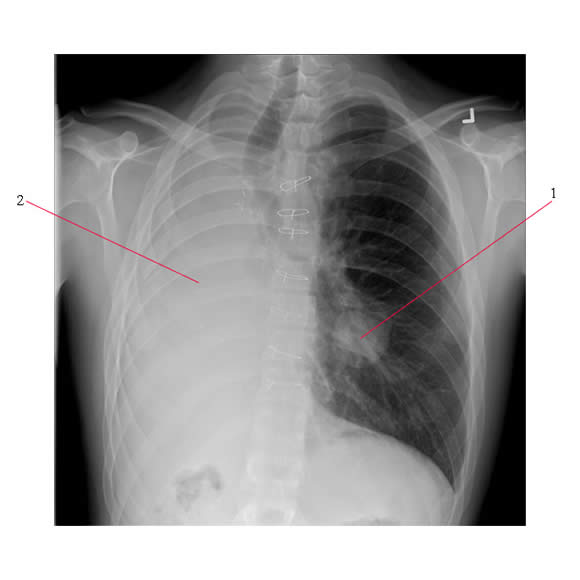Most recurrences of osteosarcoma develop within 2 to 3 years after treatment completion. Late recurrences are rare (<4%).
Recurrent disease in lung :-
- Recurrence of osteosarcoma is most often in the lung.
- Patients with recurrent osteosarcoma should be assessed for surgical resectability, as they may sometimes be cured with aggressive surgical resection with or without chemotherapy.
- The ability to achieve a complete resection of recurrent disease is the most important prognostic factor at first relapse
- 5-year survival rate of 20% to 45% following complete resection of metastatic pulmonary tumors.
- 20% survival rate following complete resection of metastases at other sites.
Survival for patients with unresectable metastatic disease is less than 5%
Factors that suggest a better outcome include
- fewer pulmonary nodules
- Unilateral pulmonary metastases
- Longer intervals between primary tumor resection and recurrence.
The chest X-ray below shows that the patient had a previous right sided pneumonectomy (#2) for metastatic disease (the right hemithorax is opaque and the trachea is pulled towards the right) and now unfortunately has a left sided hilar mass (#1) - due to further recurrent osteogenic sarcoma.

Recurrent disease in bone:
- Patients with osteosarcoma who develop bone metastases have a poor prognosis. In one large series, the 5-year event-free survival (EFS) rate was 11%.
- Patients with late solitary bone relapse have a 5-year EFS rate of approximately 30%.
Link: Recurrent OS at the NCI

